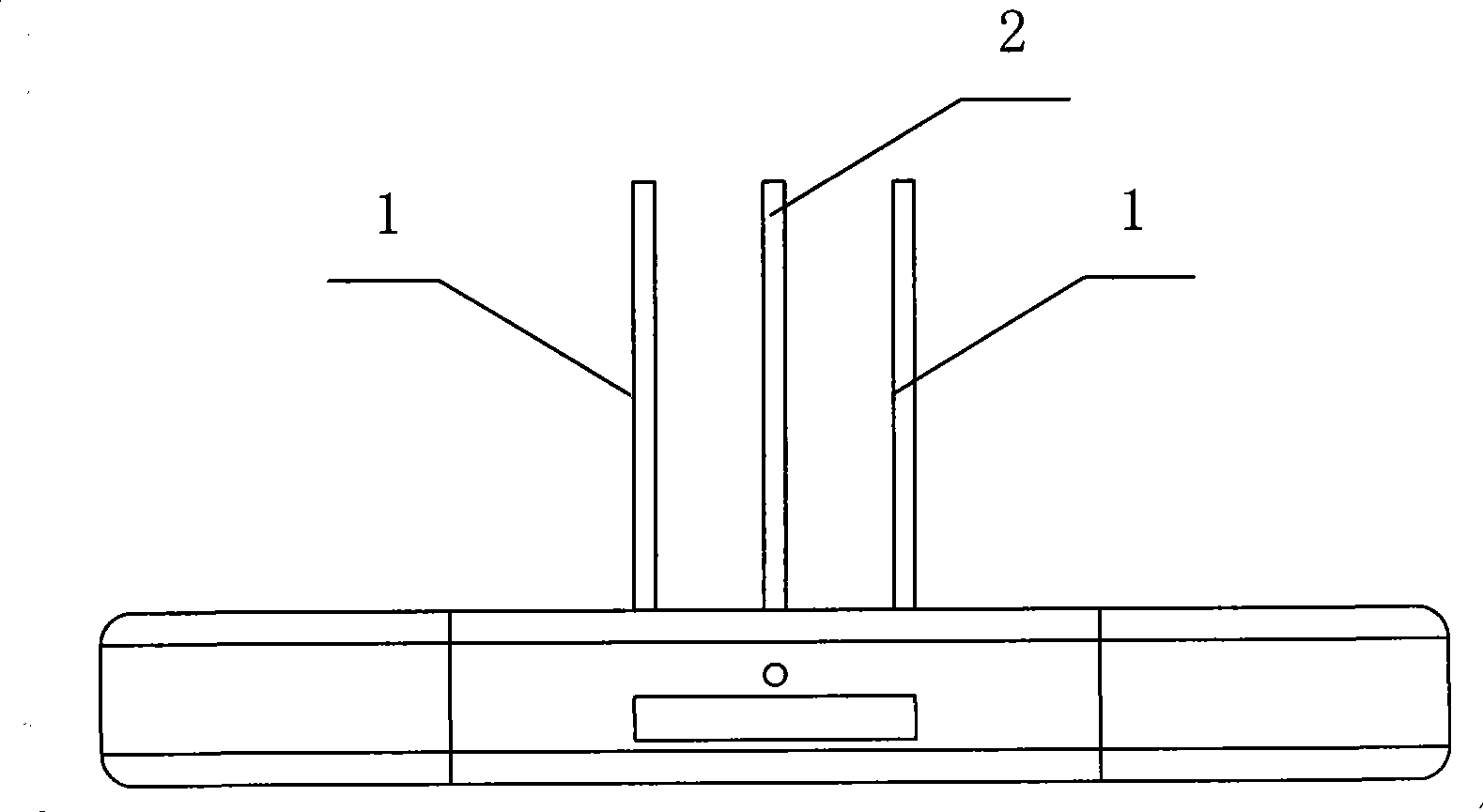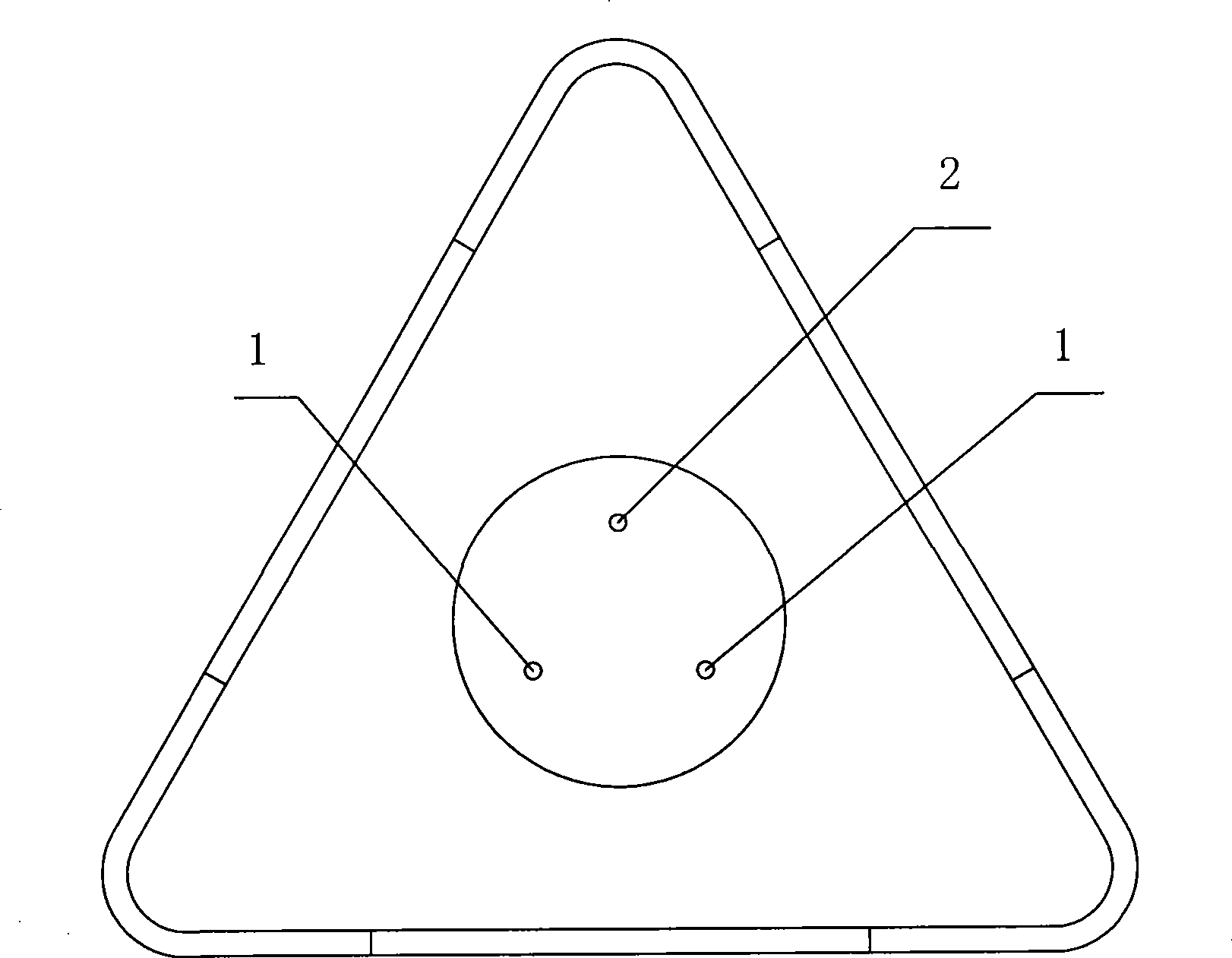Hypodermic glucose sensor and making method thereof
A glucose sensor and implantable technology, applied in the fields of sensors, medical science, diagnostic recording/measurement, etc., can solve the problems that the measurement range of the glucose sensor does not meet the actual requirements, the subcutaneous oxygen concentration decreases, etc., to prevent the loss of enzymes, Optimize performance, improve performance effect
- Summary
- Abstract
- Description
- Claims
- Application Information
AI Technical Summary
Problems solved by technology
Method used
Image
Examples
Embodiment 1
[0057] Embodiment 1, a subcutaneously implantable glucose sensor, such as figure 1 , 2 , 3, including a needle-shaped reference electrode 2 and at least one needle-shaped working electrode 1, the working electrode 1 includes a conductive layer 7 and an enzyme film layer 5, and is characterized in that: the working electrode 1 also includes an inner hydrophobic layer 6. Polymer material controlled diffusion layer 4 and outer hydrophobic layer 3, conductive layer 7, inner hydrophobic layer 6, enzyme film layer 5, polymer material controlled diffusion layer 4 and outer hydrophobic layer 3 are covered sequentially from inside to outside.
[0058] In this example:
[0059] Conductive layer 7 is a cylindrical platinum substrate;
[0060] The material of the inner hydrophobic layer 6 is cellulose acetate;
[0061] The enzyme membrane layer 5 contains glucose oxidase and catalase;
[0062] The polymer material control diffusion layer 4 is made of cellulose acetate;
[0063] The m...
Embodiment 2
[0076] Embodiment 2, the subcutaneous implantable glucose sensor, has the same general structure and experimental conditions, and the only differences are as follows.
[0077] The material of the inner hydrophobic layer 6 is silica gel instead of cellulose acetate;
[0078] The polymer material control diffusion layer 4 is made of polyvinyl alcohol instead of cellulose acetate;
[0079] Seven identical glucose sensors (ie, sensors 8 through 14) were also prepared with the following thickness R and length L parameters.
[0080]
parameter
platinum electrode
inner hydrophobic layer
Enzyme layer Polymer Materials
controlled diffusion layer
outer hydrophobic layer
[0081] thickness
(R)
R5 = 210μm
R4 = 20μm
R3 = 15μm
R2 = 20μm
R1=20μm length
(L)
L5=6mm
L4=4mm
L3=3.5mm
L2=4mm
L1=2mm
[0082] Table 3: Dimensional parameter table of sensor 8 to sensor 14 ...
Embodiment 3
[0087] Embodiment 3, the method of manufacturing the subcutaneous implantable glucose sensor of Embodiment 1: the glucose sensor has two working electrodes 1 and a reference electrode 2, and the working electrode 1 and the reference electrode 2 can be fixed on a base.
[0088] The inner hydrophobic layer 6 is combined on the surface of the conductive layer 7 by dipping; the conductive layer 7 is a cylindrical platinum substrate, and the surface of the platinum electrode is activated by oxygen ion etching.
[0089] The enzyme membrane layer 5 uses glutaraldehyde as a cross-linking agent and bovine serum albumin as a carrier, and is fixed on the surface of the inner hydrophobic layer 6 by cross-linking and covalent bonding;
[0090] The polymer material control diffusion layer 4 is fixed on the surface of the enzyme membrane layer 5 by coating;
[0091] The outer hydrophobic layer 3 is coated on the surface of the polymer material diffusion control layer 4 .
[0092] The sensor...
PUM
| Property | Measurement | Unit |
|---|---|---|
| Radius r | aaaaa | aaaaa |
| Length | aaaaa | aaaaa |
| Thickness | aaaaa | aaaaa |
Abstract
Description
Claims
Application Information
 Login to View More
Login to View More - R&D
- Intellectual Property
- Life Sciences
- Materials
- Tech Scout
- Unparalleled Data Quality
- Higher Quality Content
- 60% Fewer Hallucinations
Browse by: Latest US Patents, China's latest patents, Technical Efficacy Thesaurus, Application Domain, Technology Topic, Popular Technical Reports.
© 2025 PatSnap. All rights reserved.Legal|Privacy policy|Modern Slavery Act Transparency Statement|Sitemap|About US| Contact US: help@patsnap.com



